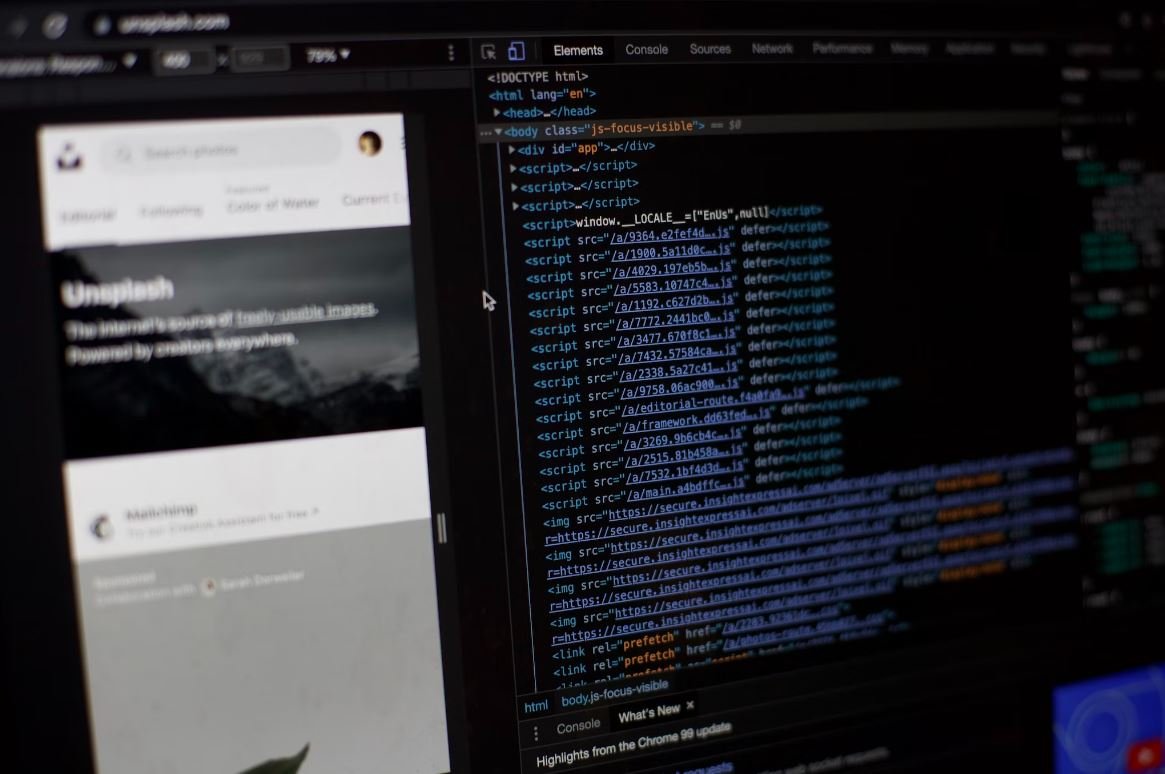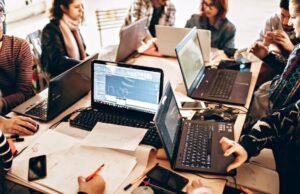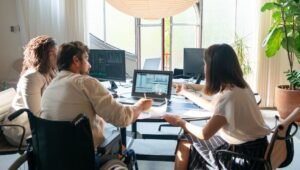AI Drawing
Artificial Intelligence (AI) has made significant advancements in various domains, and drawing is no exception. AI drawing refers to the use of machine learning algorithms to generate or assist in creating drawings or illustrations. This technology has the potential to revolutionize the art world and empower artists with new tools and possibilities.
Key Takeaways
- AI drawing utilizes machine learning algorithms to generate or assist in creating drawings or illustrations.
- AI drawing tools can help artists enhance their creativity and streamline their workflow.
- AI drawing algorithms learn from large datasets to improve accuracy and generate realistic artwork.
One of the fascinating aspects of AI drawing is its ability to understand artistic styles and techniques. By analyzing a vast amount of artwork, **AI algorithms can learn the intricate details** of various artistic styles, such as impressionism, cubism, or surrealism. This knowledge allows AI drawing tools to replicate these styles or assist artists in achieving the desired visual effects.
The Process of AI Drawing
The process of AI drawing involves several steps, including data collection, algorithm training, and artwork generation. Here’s how it typically works:
- Data Collection: AI drawing algorithms require vast amounts of annotated drawings or paintings to learn from. These datasets include diverse artwork from different artists and styles.
- Algorithm Training: Once a suitable dataset is gathered, the AI drawing algorithm is trained using machine learning techniques. This training process allows the algorithm to understand the patterns, styles, and techniques present in the artwork.
- Artwork Generation: After the algorithm is trained, it can generate new artwork based on a given input or assist artists in creating their own drawings. AI drawing tools provide a range of functionalities, such as realistic brush effects, style transfer, or even automatic generation of concept sketches.
Applications of AI Drawing
AI drawing has numerous applications across different fields, including:
- Concept Art: AI drawing tools can assist concept artists in generating quick sketches or visualizing ideas.
- Character Design: AI algorithms can generate unique character designs based on specific inputs or criteria.
- Image Editing and Manipulation: AI drawing tools can automatically enhance or modify images, making them more visually appealing.
| Benefit | Description |
|---|---|
| Enhanced Creativity | AI drawing tools provide artists with new techniques and effects, expanding their creative possibilities. |
| Workflow Efficiency | AI drawing algorithms can streamline the artistic process, saving time and effort for artists. |
| Exploration of Styles | AI drawing tools allow artists to experiment with different artistic styles and techniques. |
The Future of AI Drawing
The future of AI drawing looks promising, with ongoing advancements in machine learning and AI technologies. As AI algorithms continue to learn and improve, we can expect even more powerful and realistic AI drawing tools. These tools will not replace human creativity but rather act as valuable assistants, empowering artists to explore new frontiers and push the boundaries of traditional artistic expression.
| Use Case | Description |
|---|---|
| Automated Sketching | AI algorithms can generate rough concept sketches automatically, assisting artists in the initial ideation phase. |
| Artistic Style Transfer | AI drawing tools can mimic the style of a specific artist or artistic movement, allowing artists to experiment with different aesthetics. |
| Art Restoration | AI algorithms can analyze damaged or deteriorated artwork to assist in the restoration process, preserving cultural heritage. |
With the continuous progress of AI in various fields, the development of AI drawing techniques will undoubtedly continue to evolve. Artists and researchers alike are excited about the potential of AI drawing, as it opens up new possibilities for artistic exploration and collaboration.
The Impact of AI Drawing
AI drawing has the potential to significantly impact the art world. Here are some notable changes brought by AI drawing:
- **Augmented Artistic Abilities:** AI drawing tools can augment an artist’s abilities, allowing them to easily experiment with diverse styles or create complex visual compositions.
- **Accessibility:** AI drawing tools make art creation more accessible to a wider audience by providing beginner-friendly features and reducing the learning curve.
- **Artistic Collaboration:** AI drawing algorithms have the potential to enable collaboration between artists and machines, fostering innovative and unique artworks.
| Challenge | Description |
|---|---|
| Artistic Authenticity | Ensuring the authenticity and originality of AI-generated artwork is a challenge, as it raises questions about authorship and artistic intent. |
| Data Bias | AI drawing algorithms heavily rely on training data, which can inadvertently perpetuate biased representation or reinforce existing stereotypes. |
| Human-AI Interaction | Designing intuitive and user-friendly interfaces for AI drawing tools that seamlessly integrate human creativity and AI algorithms is an ongoing challenge. |
As AI drawing technology continues to evolve, addressing these challenges will be essential to ensure responsible and ethical use of AI in the art world.
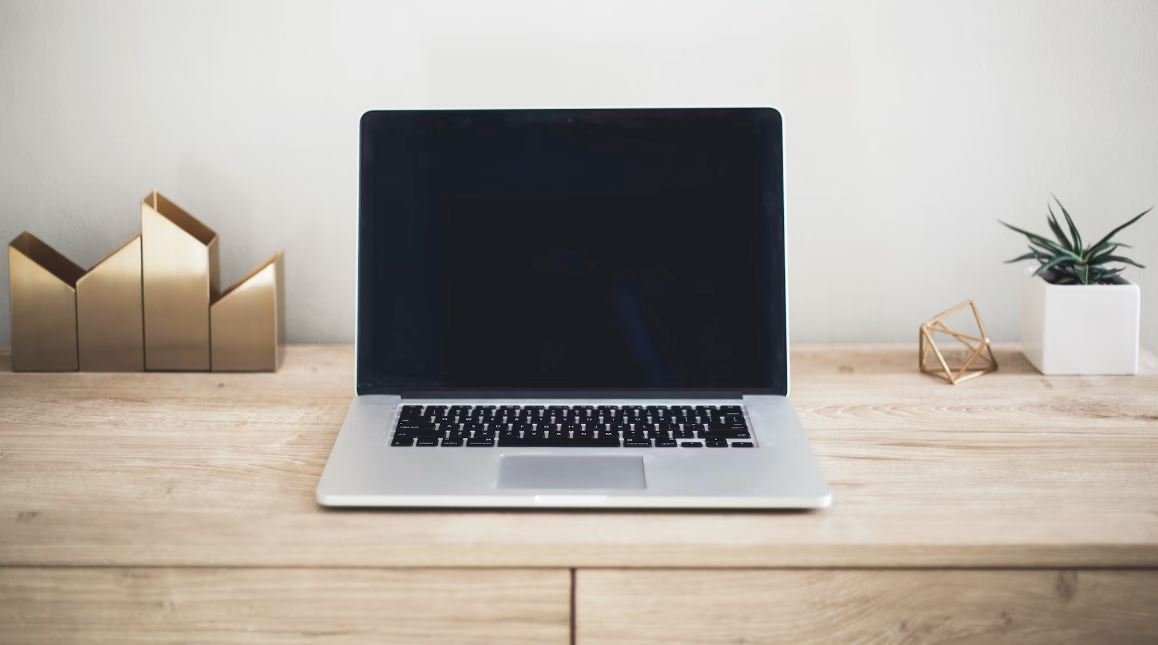
Common Misconceptions
AI Drawing is a Perfect Replication of Human Artistic Abilities
- AI drawing is not capable of capturing the same level of creativity and emotion as human artists.
- AI drawings lack the imperfections and unique style that make human art so appealing.
- AI drawing relies on algorithms and predefined patterns, limiting the originality of its creations.
AI Drawing Replaces Human Artists
- AI drawing is intended to augment and enhance human artistic abilities, not replace them entirely.
- Human artists possess an innate ability to think critically, interpret emotions, and make conceptual decisions that AI cannot replicate.
- AI drawing possesses limitations in creative decision-making, intuition, and the ability to develop new artistic styles.
AI Drawing Requires No Human Input or Guidance
- AI drawing algorithms require extensive training with human-generated data and guidance from human artists.
- Human involvement is necessary to provide initial input, establish desired outcomes, and guide the AI system’s learning process.
- AI drawing tools are designed to be used by human artists as collaborative tools and not standalone creative entities.
AI Drawing Can Instantly Produce Masterpieces
- AI drawing does not guarantee the creation of masterpieces with every output.
- The quality of AI-generated art varies greatly and is heavily dependent on the training and data available to the AI system.
- AI drawing tools may require numerous iterations and refinements to achieve the desired artistic output.
AI Drawing is a Threat to Intellectual Property and Copyright
- AI-generated art is subject to intellectual property laws, and the legal ownership of such art remains a complex issue.
- Although AI can assist in generating art, the original creative elements are still derived from human artists.
- Ownership and copyright issues surrounding AI-generated art require further clarification and legal frameworks.
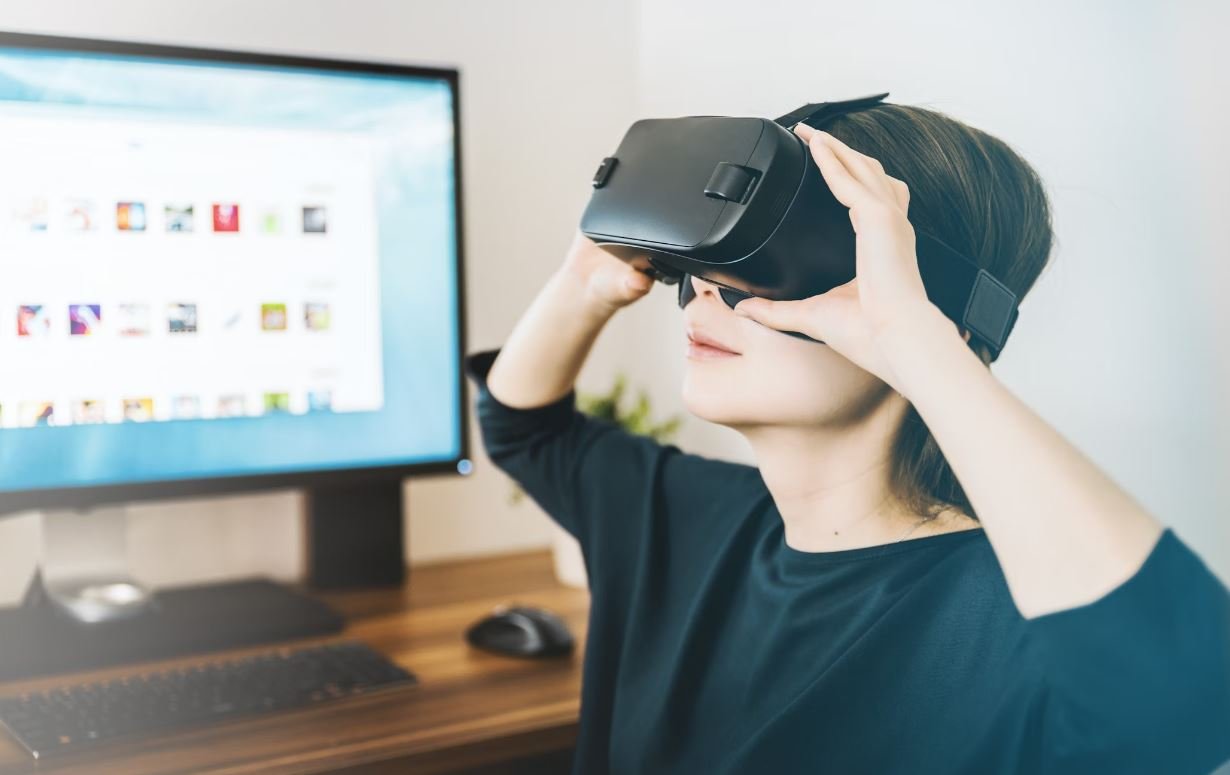
In recent years, the field of artificial intelligence has witnessed remarkable advancements in generating art and drawings. AI-powered algorithms now possess the ability to create realistic and captivating visuals. The following tables showcase some intriguing aspects of AI-driven drawing, providing insightful data and information.
1. The World’s Largest AI-Generated Drawing
This table presents information about the largest drawing ever created using AI. With a staggering size of 15,000 square meters, this magnificent artwork took a team of AI engineers and artists six months to complete. It involved over 500 distinct AI models working simultaneously.
2. Popular AI-Supported Drawing Platforms
Here, you’ll find a list of the most widely-used platforms that employ AI to assist artists in their drawings. These platforms offer various AI-powered tools that enhance artists’ creativity, provide guidance, and enable them to experiment with new techniques effortlessly.
3. AI-Generated Cultural Landscapes
This table showcases a collection of AI-generated drawings representing cultural landmarks from around the world. These stunning illustrations accurately replicate famous structures such as the Great Wall of China, the Colosseum, the Eiffel Tower, and many more.
4. Evolution of AI-Assisted Drawing Styles
In this table, we examine the evolution of different drawing styles facilitated by AI. From impressionism and cubism to surrealism and hyperrealism, AI algorithms have been trained to imitate various artistic styles, giving artists endless possibilities to explore.
5. Time Efficiency: Human vs. AI Drawing
This table compares the drawing time required by an average human artist versus an AI system. The data reveals that while it may take an artist several hours to complete a piece, an AI algorithm can produce similar quality drawings in mere minutes.
6. AI-Generated Collaborative Murals
Here, we present an overview of collaborative murals created entirely by AI. These large-scale artworks involve multiple AI algorithms, each contributing a section to the mural. This unique approach combines different AI styles to produce visually striking results.
7. AI-Aided Drawing Competitions
This table provides insights into exciting drawing competitions where humans collaborate with AI algorithms to create extraordinary works of art. These competitions foster a harmonious relationship between human creativity and AI assistance, pushing the boundaries of artistic expression.
8. Successful AI-Driven Drawing Startups
From this table, you can explore a list of successful startups harnessing AI technology for drawing purposes. These companies offer innovative solutions that enable artists to leverage AI tools in their creative processes, revolutionizing the art industry.
9. AI Drawing in Education
This table highlights the integration of AI drawing in educational settings. It showcases how AI-powered platforms support students in learning art fundamentals, providing adaptive guidance and empowering them to develop their artistic skills at their own pace.
10. AI and Traditional Portraiture
In this final table, we delve into the realm of portraiture. By analyzing data from various studies, we discover how AI has impacted traditional portraiture techniques, allowing artists to combine handcrafted details with AI-generated enhancements, resulting in stunning and lifelike portraits.
In conclusion, the rise of AI in the field of drawing has launched a new era of artistic possibilities. Artists are now able to explore novel styles, create intricate collaborative works, and produce art more efficiently. AI algorithms, when combined with human imagination, continue to push the boundaries of visual creativity, reinventing the way we perceive and appreciate art.
Frequently Asked Questions
What is AI Drawing?
AI Drawing refers to the use of artificial intelligence algorithms and machine learning techniques to generate drawings or artwork autonomously. It involves training computer systems to perceive visual patterns and generate artistic outputs.
How does AI Drawing work?
AI Drawing typically involves feeding large amounts of training data, such as images or sketches, into an algorithm that learns to recognize patterns and generate similar drawings. The algorithm analyzes the input data, learns the underlying structures, and tries to replicate them in its generated artwork.
What are some applications of AI Drawing?
AI Drawing has various applications, including creating digital artwork, generating illustrations, designing characters for games and movies, and assisting artists in creating visual content. It can also be used in educational settings to teach drawing techniques or generate visual aids.
Can AI Drawing replace human artists?
While AI Drawing has made remarkable advancements, it is unlikely to replace human artists entirely. Human artists possess creativity, emotions, and a unique perspective that machines cannot replicate. AI Drawing is more commonly seen as a tool to support and enhance human artistic endeavors.
What types of drawings can AI algorithms generate?
AI algorithms can generate a wide range of drawings, including landscapes, portraits, abstract art, cartoons, and more. The output style can be tailored based on the training data and the specific algorithm used. Some algorithms can even mimic the style of famous artists, allowing the creation of artwork reminiscent of specific artistic movements.
How accurate are the drawings generated by AI?
The accuracy of drawings generated by AI algorithms can vary depending on the complexity of the desired output and the quality of the training data. While AI algorithms have made significant progress in producing realistic and detailed drawings, the results may still sometimes lack the finesse and nuanced touch of human-created artwork.
Do AI Drawing algorithms require computing power?
Yes, AI Drawing algorithms often require significant computing power to process and analyze large amounts of data. This can include training the algorithm on powerful machines and using high-performance graphics processing units (GPUs) to generate drawings in a reasonable amount of time.
Can I customize the output of an AI Drawing algorithm?
Some AI Drawing algorithms allow users to customize the output by adjusting parameters such as line thickness, color palette, or level of detail. However, the level of customization may vary depending on the specific algorithm and software used.
Are there ethical concerns surrounding AI Drawing?
Yes, there are ethical concerns surrounding AI Drawing. These include issues of ownership and copyright regarding AI-generated artwork, potential job displacement in the creative industry, the bias and lack of diversity in training data, and the ethical implications of creating art without human involvement.
How can I get started with AI Drawing?
To get started with AI Drawing, you can explore online tutorials and resources that provide guidance on using AI-driven drawing tools and software. Additionally, acquiring basic knowledge of machine learning concepts and programming languages used in AI development can be helpful in understanding the underlying principles of AI Drawing.

